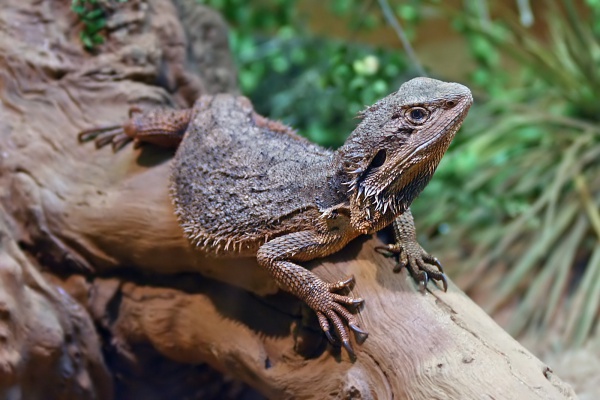Facts About Bearded Dragon
The eastern bearded dragon, commonly known as the bearded dragon or bearded lizard, is a captivating agamid lizard indigenous to the wooded regions of Australia. First described in 1829 by Georges Cuvier as Amphibolurus barbatus, this species is now scientifically recognized as Pogona barbata and is part of a genus comprising eight distinct species.
These lizards are impressive in size, with adult males reaching up to 60 cm in length and females growing up to 50 cm. They boast a striking appearance, characterized by a large, triangular head adorned with spiny scales on their throats, which can be elevated to form a "beard." Their slender bodies are also covered with spiny scales around the head, mouth corners, ear openings, and along the abdomen. The coloration of eastern bearded dragons varies from grey-black to red, with juveniles being paler and developing yellow, blue, or green tinges as they mature.
Eastern bearded dragons are diurnal, meaning they are active during the day, and semiarboreal, spending a portion of their time in trees. They are also notably territorial, with males typically displaying more aggressive behavior than females.
Although primarily found in eastern Australia, they have been documented in various regions across the country. In the wild, their diet consists of small animals such as insects, mice, and smaller reptiles. In captivity, their diet can be supplemented with leafy vegetables, fruits, and berries.
One of the most fascinating aspects of eastern bearded dragon behavior is their defense mechanism. When threatened, they may inflate their throats, display their beards, and open their mouths to reveal a bright yellow lining.
Recent studies have indicated that high temperatures can influence the sex determination of eastern bearded dragons. Some individuals may exhibit female characteristics and can even reproduce despite having male chromosomes.
A distinguishing feature that sets the eastern bearded dragon apart from its close relative, the central bearded dragon, is its body structure. The eastern bearded dragon has a more slender body and a row of spines along the lateral edge that continues over the forearm.
